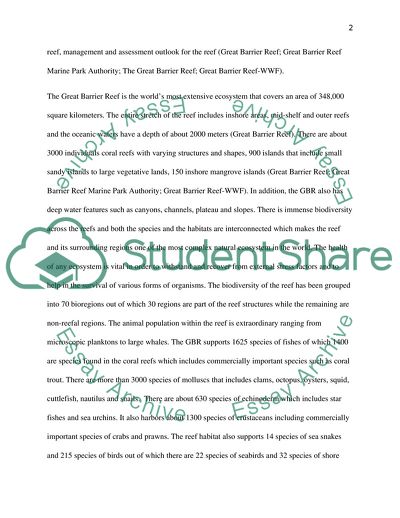Cite this document
(Main Aspects of Great Barrier Reef Report Example | Topics and Well Written Essays - 1750 words, n.d.)
Main Aspects of Great Barrier Reef Report Example | Topics and Well Written Essays - 1750 words. https://studentshare.org/environmental-studies/1816930-great-barrier-reef
Main Aspects of Great Barrier Reef Report Example | Topics and Well Written Essays - 1750 words. https://studentshare.org/environmental-studies/1816930-great-barrier-reef
(Main Aspects of Great Barrier Reef Report Example | Topics and Well Written Essays - 1750 Words)
Main Aspects of Great Barrier Reef Report Example | Topics and Well Written Essays - 1750 Words. https://studentshare.org/environmental-studies/1816930-great-barrier-reef.
Main Aspects of Great Barrier Reef Report Example | Topics and Well Written Essays - 1750 Words. https://studentshare.org/environmental-studies/1816930-great-barrier-reef.
“Main Aspects of Great Barrier Reef Report Example | Topics and Well Written Essays - 1750 Words”. https://studentshare.org/environmental-studies/1816930-great-barrier-reef.


